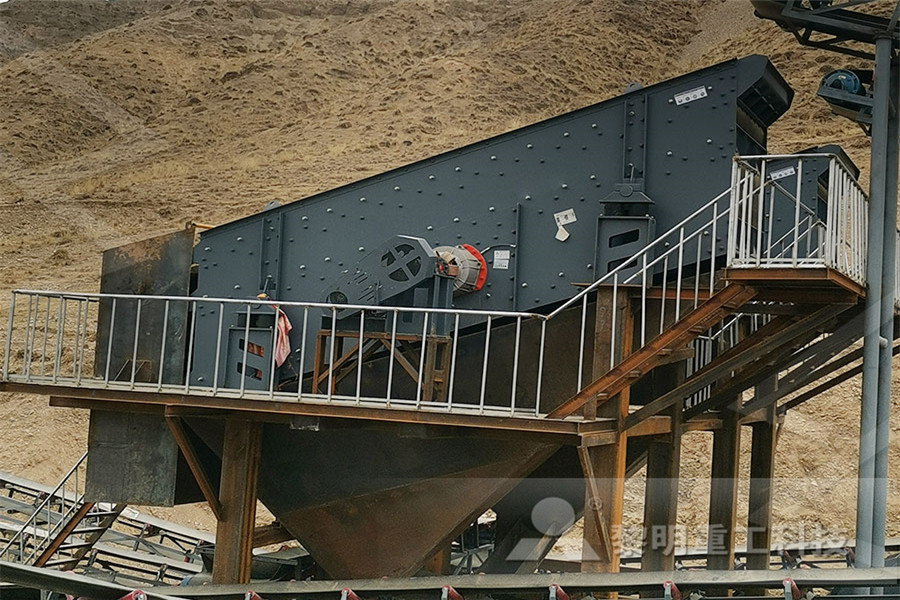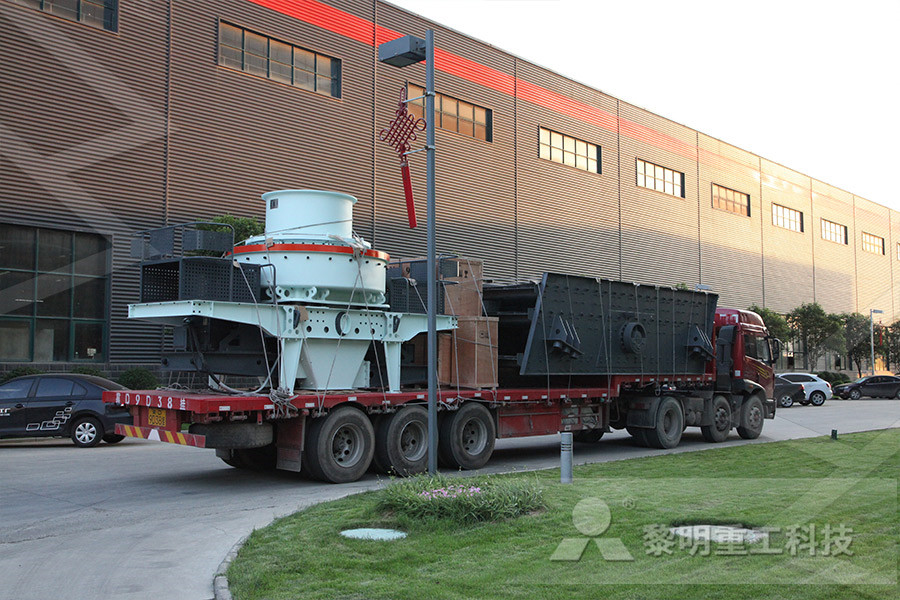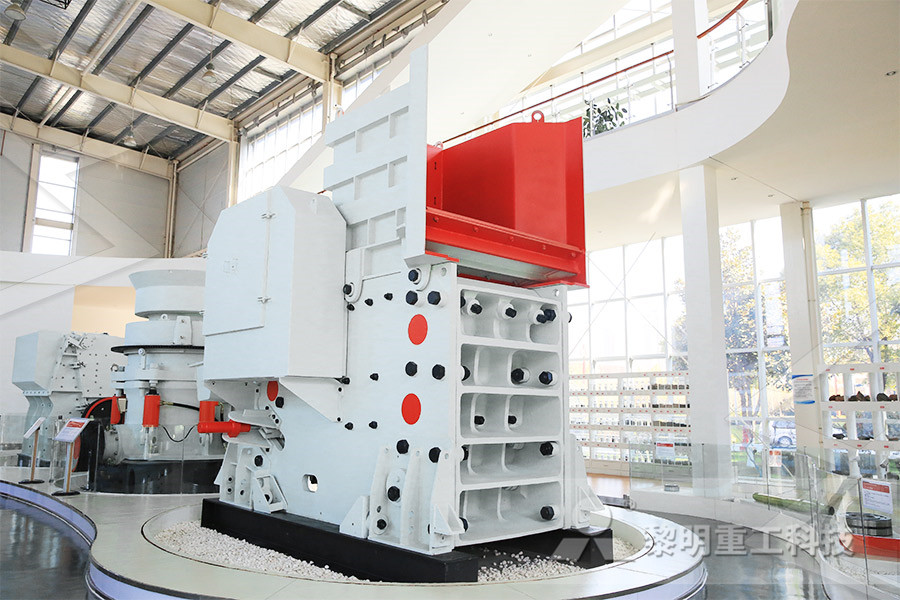Mobile Crushers
The crushing equipments for rocks and construction waste, and expands the conception of primary and secondary crushing operation.
Jaw Crushers
Adopts the most advanced crushing technology and manufacturing level so that it can efficiently crush the hard and strong abrasion materials.
Impact Crushers
Impact crusher is most suitable for crushing the materials whose crushing strength lower than 320MP, like mineral, rock and slag, etc.
Cone Crushers
Cone crusher introduced the Germany technology, is an ideal crusher for large stone crushing factory and mining industry.
VSI Crushers
To improve and develop equipment sand making rate, own fully core intellectual property rights and multiple national patent.
Grinding Mills
Besides high quality equipment, the company will provide sincere service such as Engineering Procurement Construction project.

Design Issues for Using Magnetic Materials in Radiation
Feb 25, 2021 Soft Magnetic Materials Soft magnetic materials have magnetic domains that readily align to a magnetic field with minimal wasted energy A material is considered a soft magnet when the domain wall movement and domain magnetic orientation occur in weak applied fields, that is if coercivity, H c, is less than 1000 Amp/m [2] In addition to low Magnetic materials have a long history of usage According to Chinese data, the compass was discovered in China more than 4500 years ago There are also claims that a natural magnet was discovered in Magnesia (Asia Minor) more than 3500 years ago Magnetic materials have contributed vitally to the history of civilizationMagnetic Material an overview ScienceDirect TopicsMagnets are used in filtering machines which separates metallic ores from crushed rocks It is also used in food processing industries for separating small metallic pieces from grains etc Magnets are used in MRI machines which are used to create an image of the bone structure, organs, and tissues Even magnets are used to cure cancerUses of Magnets Applications Utilization In Daily Life

Magnetic Materials What Materials Make Magnets
Magnetic Raw Materials All the permanent magnets in the world are currently made from five types of material each with very different characteristics The five types are, alnico, ferrite, flexible rubber and the rare earth magnets samarium cobalt and neodymiumFeb 21, 2020 When you think of magnetic materials, you probably think of iron, nickel or magnetite Unlike paramagnetic materials, the atomic moments in these materials exhibit very strong interactions These interactions are produced by electronic exchange forces and result in a parallel or antiparallel alignment of atomic moments10 Examples Of Magnetic Materials ALB Materials IncThe area enclosed by the hysteresis loop represents energy that is converted to heat as material cycles around the loop Core Losses Hysteresis Loss Due to the expansion, contraction, and realignment of magnetic domains, which produces microscopic friction Hysteresis loss is minimized by using a soft magnetic material which has a narrow hysteresisMagnetic Materials and Circuits

Integrated onchip inductors using magnetic material
Apr 01, 2008 The inductors use aluminum or copper metallization and amorphous CoZrTa magnetic material Increases in inductance of up to 28 times corresponding to inductance densities of up to 13 μ H / mm 2 were obtained, significantly greater than prior values for Finally, the magnetic material is machined, grinded and finished using watercooled diamondcoated grinding machinery before being coated and magnetised Magnetic Properties Samarium cobalt magnets are available in two types or grades, Magnetic Materials What Materials Make Magnets Feb 21, 2020 2 Application of Magnetic and NonMagnetic Materials We can use magnetic and nonmagnetic properties of a substance in daily life for ease of working some of them are – If a large number of pins are fallen from the pin box on the ground, they can be easily collected by using a magnet as pins are made up of iron which is a magnetic material10 Examples Of Magnetic Materials ALB Materials Inc

Using magnetic materials to harvest microalgal biomass
Using naked iron oxide (Fe 3 O 4) and yttrium iron oxide (Y 3 Fe 5 O 12) nanoparticles as flocculants, the harvesting efficiency of Chlorella vulgaris biomass was investigatedThe harvesting process includes two steps, which are the separation of microalgae from the culture solution with the magnetic nanoparticles and then the separation of the algae from the The area enclosed by the hysteresis loop represents energy that is converted to heat as material cycles around the loop Core Losses Hysteresis Loss Due to the expansion, contraction, and realignment of magnetic domains, which produces microscopic friction Hysteresis loss is minimized by using a soft magnetic material which has a narrow hysteresisMagnetic Materials and Circuitsimproved over the years and is probably, pound for pound, the most, widely used magnetic material One of the drawbacks in using steel in the early years was, as the material became older, the losses would increase With the addition of silicon to the steel, the advantages were twofold: it increased the electrical resistivity, therefore Chapter 2 Magnetic Materials and Their Characteristics

Using magnetic cubes as microbots cen
Jan 02, 2022 Using magnetic cubes as microbots Polymer cubes coated with a magnetic material on one face assemble into chains with various orientations by applying a magnetic field Janus cubes —polymer Remote control of biology using magnetic materials and devices Professor Jacob Robinson Department of Electrical and Computer Engineering Department of Bioengineering Rice University Friday, Dec 3, 10:30 am US central time Room: CBB 108 (inperson only) Miniature implanted devices capable of manipulating and recordingRemote control of biology using magnetic materials and Thus, the magnetic field of the Magnetic Materials persists even when the external field disappears This property is used to produce Permanent magnets that we use every day Iron, cobalt, nickel, neodymium and their alloys are usually highly ferromagnetic and are used to make permanent magnetsClassification of Magnetic Materials Types of Magnetic

Integrated onchip inductors using magnetic material
Apr 01, 2008 Onchip inductors with magnetic material are integrated into both advanced 130 and 90 nm complementary metaloxide semiconductor processes The inductors use aluminum or copper metallization and amorphous CoZrTa magnetic material Increases in inductance of up to 28 times corresponding to inductance densities of up to 13 μ H / mm 2 were obtained, material responds to a magnetic field and as a consequence the susceptible is a function of applied magnetic field Therefore, ferromagnetic materials are usually compared in terms of saturation magnetisation (magnetisation when all domains are aligned) rather than susceptibility In the periodic table of elements only Fe, Co and Ni are Classification of Magnetic MaterialsFeb 08, 2022 Skyrmions, tiny magnetic anomalies that arise in twodimensional materials, can be used to generate true random numbers useful in cryptography and probabilistic computing Whether for use in cybersecurity, gaming, or scientific simulation, the world needs true random numbers, but generating them is harder than one might thinkSkyrmions – Tiny Magnetic Swirls – Used To Generate True

Reconfigurable singlematerial Peltier effect using
Dec 20, 2021 In the following, we make a magneticphase junction of AF/FI/AF by using a local heating technique and experimentally and numerically demonstrate a singlematerial Peltier cooling and heating deviceMagnetic fields have a very small susceptibility in the case of paramagnetic materials, which means these types of materials are very slightly attracted by them Also, they do not, however, retain or regain their magnetic properties once the external magnetic field is removed from their sight or range, unlike ferromagnetic materialsMagnetic Classification of Materials Types and UsesApr 08, 2021 Here, we review the recent progress in fundamental and applied studies on the transverse thermoelectric generation using magnetic materials We anticipate that this perspective will further stimulate research activities on the transverse thermoelectric generation and lead to the development of nextgeneration thermal energy harvesting and heat Transverse thermoelectric generation using magnetic materials

Classification of Magnetic Materials Types of Magnetic
Thus, the magnetic field of the Magnetic Materials persists even when the external field disappears This property is used to produce Permanent magnets that we use every day Iron, cobalt, nickel, neodymium and their alloys are usually highly ferromagnetic and are used to make permanent magnetsSep 20, 2019 Along with the abovementioned metals, compounds of some rare earth elements also have excellent ferromagnetic properties Gadolinium, samarium, neodymium are all examples of magnetic rare earth metals Various magnets with different properties can be manufactured using the above metals in combination with iron, nickel and cobaltMagnetic Metals NonMagnetic Metals With ExamplesRemote control of biology using magnetic materials and devices Professor Jacob Robinson Department of Electrical and Computer Engineering Department of Bioengineering Rice University Friday, Dec 3, 10:30 am US central time Room: CBB 108 (inperson only) Miniature implanted devices capable of manipulating and recordingRemote control of biology using magnetic materials and

Energyefficient CO2 capture and release using magnetic
Jan 15, 2021 To this end MOFs offer the advantages of easy incorporation of magnetic particles for the fabrication of magnetic composites using simple methods Additional use of polymers can be incorporated to the composite to enhance water sensitivity, leading to more a stable material for real applications in power plants and industrial processesFeb 08, 2021 Transverse thermoelectric generation using magnetic materials The transverse thermoelectric effect refers to the conversion of a temperature gradient into a transverse charge current, or vice versa, which appears in a conductor under a magnetic field or in a magnetic material with spontaneous magnetization Among such phenomena, the Transverse thermoelectric generation using magnetic materialsMagnetic materials are always made of metal, but not all metals are magnetic Iron is magnetic, so any metal with iron in it will be attracted to Which materials are magnetic? BBC Bitesize

Classification of Magnetic Materials
material responds to a magnetic field and as a consequence the susceptible is a function of applied magnetic field Therefore, ferromagnetic materials are usually compared in terms of saturation magnetisation (magnetisation when all domains are aligned) rather than susceptibility In the periodic table of elements only Fe, Co and Ni are The magnetic material is the paramount player in the design of magnetic components The important class of magnetic materials is the ferromagnetic materialssuch asCobalt Steel, Cast Steel, Silicon ironand 785 Permalloy or their compoundsThese materials and their alloys have high permeability, sometimes ranging into hundreds of thousandsFerromagnetic Materials Characteristics: Their Application Application of Magnetic and NonMagnetic Materials We can use magnetic and nonmagnetic properties of a substance in the daily life for ease of working some of them are – If a large number of pins are fallen from the pin box on the ground, they can be easily collected by using a magnet as pins are made up of iron which is a magnetic materialMagnetic and NonMagnetic Materials: Introduction, Videos

Imaging Magnetic Samples Using ZEISS FESEM
May 18, 2020 In this webinar, these questions will be discussed in detail Several example will be given to highligh the correct method to image magnetic materials At the end a special contrast mechanism to image magnetic domains in SEM will also be exploredCharacterization of polymer materials using magnetic levitation Volume 35, Issue 9 Jun Xie (a1) , Peng Zhao (a1) , Jianfeng Zhang (a1) , Hongwei Zhou (a2) , Jianzhong Fu (a1) and LihSheng Turng (a3)Characterization of polymer materials using magnetic Magnetic materials which are loaded in the vicinity of a magnetic compass or compass master unit could produce compass deviations as high as 125 degrees, cause navigation errors, and jeopardize the safety of the transporting aircraft Physical separation can contribute significantly to reduce magnetic Preparation and Loading of Magnetic Materials
- animated picture of ore grinding grinding mill china
- stone crusher machine prices in tamilnadu
- mobile gold ore impact crusher suppliers indonessia
- gold tailings reprocessing
- iron ore requirement for beneficiation stone
- used dolomite impact crusher for sale indonessia
- benefisiasi bijih besi dalam pemisahan magnetik
- glass bottle plants
- honert vsw dewatering screen for sale repairs upgrades
- mponentes de la mineria
- definitions of mine to mill
- sat cara perhitungan size reduction ball mill
- nevada mining and milling
- Pioneer 2148 Jaw crusher Operating Manual
- thanking a customer for loyalty
- crushing and ball mill mine
- crusher for sale crusher with
- high efficiency huazn cement mill grinding ball mills
- inquary regarding crusher plant filetype doc inurl a a
- mining business plan sample stone crushing
- cement plant milling machine for sale
- bhp billiton operated
- crusher stone nice k37
- mining ball mill grinder in india
- Saboo Cement Clincer Grinding Unit
- c wright mills imajinasi sosial ~ =luph~s0sant=
- thread grinding precision
- Used Crushers Ads For Sale
- hammer mill used in processing
- Primer Jaw Crusher Por le jaw crusher in zamiba
- tph jaw crusher plans flowsheet pdf files16841
- spesifikasi щековой дробилки для продажи
- gold refining process of refinery
- mobile ag lime crushing processing
- wet grinding mill mica india
- xbm widely used raymond mill powder machine for barite marble
- bmw crusher technical data
- olivine stone crusher
- stone crusher almedastone crusher almeida
- flotation machine equipment chromite ore beneficiation process